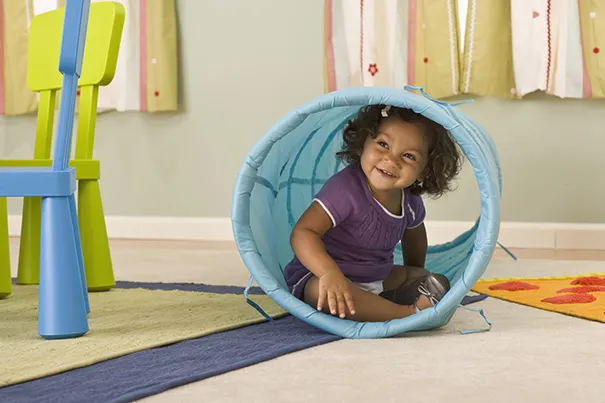Toddlers: learning through play and games
By watching your child play, you can find out how she thinks, what she's learning and how the world, including you, is influencing her. The window into these insights is play.
The Baby X experiment
Back in the 1970s, psychologist Phyllis Katz conducted what we now call the Baby X experiment. She put three toys in a room: a small football, a feminine doll and a gender-neutral toy. She dressed a three-month-old in an unadorned yellow jumpsuit and brought a series of adults (the subjects of the experiment) into the room to meet the baby. Some of the adults were told that the infant was a baby named Mary; others were told that the baby was a boy named Johnny. Most of the adults who thought the baby was a girl gave her the doll to play with. Most of those who believed the baby was a boy gave him the football.
Debate
The Baby X study sparked a lot of heated discussion about gender stereotyping. Nevertheless, when Dr. Katz repeated the experiment 10 years later, she got the same results. What's more, despite great efforts towards gender equality in recent years, if you walk into a typical nursery school, it won't be hard to guess which children will be brushing Barbie's hair and which will be crashing toy cars.
Boy toys versus girl toys: getting past stereotypes
Should you worry if your child desires or plays mostly with toys typically associated with his or her gender? Probably not, but encourage your youngster to play with a variety of toys, including those usually linked to the opposite sex. It's not about the toys themselves, but the underlying skills that they help young children to master. The fantasy play associated with dolls helps girls become sophisticated in skills used in interpersonal relationships, especially nurturing and empathy, but they're seldom acknowledged as much as the mathematical and visual-spatial skills learned from playing with 'boy toys', like blocks and cars.
Fantasy versus reality: best of both worlds
Another way in which children's play differs is whether it's based on reality (such as board games and sports) or fantasy (such as playing house or pretending to travel through time and space). In general, first-born and only children seem to do more fantasising, perhaps because they spend more time alone. They're also more likely to have imaginary companions.
Having an active fantasy life also seems to help develop, or at least reflect, higher intellectual skills. When your child imagines that a golf ball is a magical talisman and decides what to do with it (save the princess? Fight the dragon? Conjure ice-cream sundaes?), he is using fantasy to consider the implications of choosing different options. Fantasies are also an excellent way for a child to come to terms with things that challenge, frighten or confuse him. For example, a three-year-old who is upset by the noise made by a big lorry can master his fears by pretending that the wooden block he's holding in his hand is an even bigger and scarier lorry.
Reality play, on the other hand, can help a child to hone important social skills. A board game gives a pre-schooler practice in taking turns. Early sports activities teach the basics of teamwork and shared responsibility.
Getting involved
What can you do to help your child try new kinds of play? The simplest thing is to get involved. If you start playing with a cardboard house, your son won't be able to resist. The more you try to get involved and play with your child, the closer you will understand him and connect.


